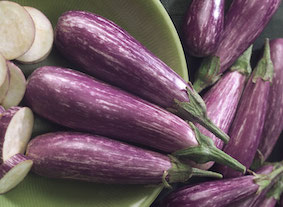Planning the Small-Space Vegetable Garden

For urban gardeners like myself, space matters. There’s not a lot of it in the city. Either you’re lucky enough to have a plot in the nearby community garden or you have a teeny-tiny back yard, or maybe you have a balcony or porch. Even at townhomes in quickly growing suburbs, the outdoor space is often allotted to a grill, not a garden.
We small-space gardeners have to plan accordingly. Here are some tips as you plan your postage-stamp garden.
Stay away from space hogs
Space is often the limiting factor in growing many of the larger garden staples such as pumpkins, squash, zucchini, and cucumbers. Pick one and grow just one, or suffer a congested growing environment; e.g. the tighter the space, the less air flow, leading to moister conditions and more disease.
Grow vertically
Cages, wire supports, tripod poles and trellises will take the climbing and vining veggies—indeterminate tomatoes, peppers, cucumbers, pole beans and the like—off the horizontal plane, saving you space. Not only will the plants have more access to light and space, they’ll suffer from less disease and damage from crawling insects.
Grow underneath
Use that space under those lifted veggies for small-statured plants like lettuce and mixed greens. Lettuces, especially, are apt to faint in hot summer weather. The shade cast from the plant towering above it will ease the heat.
Time your plantings and crops in succession
No one needs all of their beets to be ready for harvest all at once. Plant or sow just a row or two each week for three to five weeks. As each row is harvested, plant the newly opened space with another crop.
Use small varieties
Plant breeders have begun to breed plants specifically to meet the needs of folks with small spaces. These plants are small-statured, sure, but have all the taste of their bigger cousins. Many of them can grow in patio pots, hanging baskets and window boxes. Tumbling Tom tomato, Fairy Tale eggplant and Peticue cucumber are some examples of container-sized veggies.
Combine edibles with flowers
You don’t have to sacrifice your flowers in order to grow veggies—grow them together! Many herbs and smaller vegetable plants can be tucked into your flower containers and grow perfectly well. Not only that, they’ll add to the beauty of the whole combination. The reds of lettuces, silvery greens of thymes, and reds and yellows of peppers will pull out the colors of the flowers. Guaranteed that pot will be a one of a kind!
Thanks to All-America Selections for the use of the photo of Fairy Tale eggplant, an All-America Selection from 2005.

